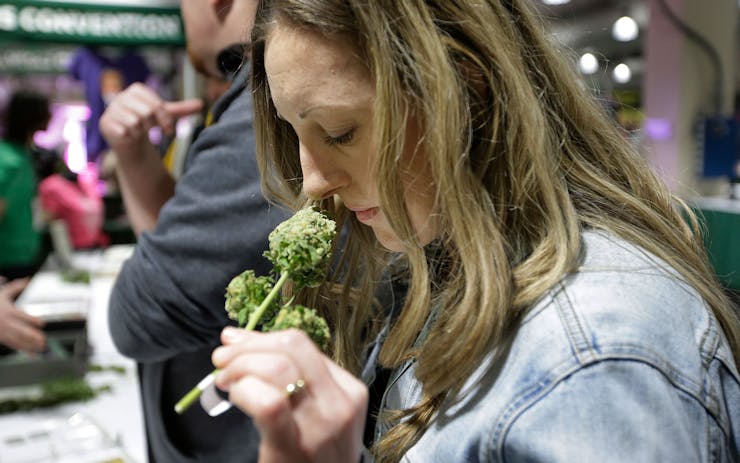Terpenes—the aromatic compounds that give cannabis different scents—have quickly become a discussion centerpiece among growers, budtenders, and consumers alike. Produced in secretory cells found in the plant’s trichomes, terpenes are found amongst cannabinoids and other oils produced by the plant. These terpenes have been shown to work directly with THC and other cannabinoids to influence and enhance the effects of different strains. Not only that, it’s common for consumers to make a purchasing decision based on how good a strain smells to them.
Follow Your Nose to the Nearest Dispensary
As we learn more about their ability to enrich cannabis’ effects and benefits, many cultivators wonder how to best capture these delicate and fragrant terpenes for an even more flavorful harvest. Here, we’ll take a look at a few primary ways to increase the terpene production in your plants.
Choose High-Quality Genetics
Not all strains are created equal. The best growers in the world can’t make ditch weed look like Super Silver Haze! If you want a high-quality and fragrant strain, don’t skimp when it comes to buying seeds or clones.
Grow Your Cannabis in Soil
Whether you’re growing indoors or outside, raising cannabis in quality soil is known to produce a more flavorful product. Many associate this with the complex nutrient profiles that can be found in soils. Just like growing wine, food, or farming livestock, cannabis grown in specific soils in specific regions can take on unique flavors.
Light Exposure
When growing flavorful cannabis, having good sun or light exposure is essential. If growing outdoors, make sure there is space between plants so that every cola is receiving as much lights as possible. Indoors, provide lights that offer a healthy range of spectrum.
Low Stress Training (LST)
A little bit of stress can go a long way in the production of trichomes and thus terpenes. There are numerous low stress training (LST) methods—as well as other more intensive methods—that can help you get smellier buds.
Training your plant by tying branches down or pruning lower branches during flowering will help direct energy to other flowers to produce more trichomes. You can also remove fan leaves around buds or expose your plants to colder nighttime temperatures.
As with any sort of training, you’ll need to pay close attention to the needs of your plants. If the process becomes too much for your plants, you may see diminished yields and quality.
Flush Your Cannabis Plants
Two weeks before harvesting, you should stop feeding your plants. Nutrients build up in the buds and overpower the beautiful, natural flavors they produce. By giving your plants a pure water source, all excess nutrients will slowly be washed out and leave you with a clean, aromatic end product.
Harvest Time
Leaving your plants up for too long will result in trichomes breaking down, altering their chemical contents. Using a magnifying glass, you can observe the color and shape of trichomes which will help you determine when your cannabis is ready for harvest. Take a look at Leafly’s guide to harvesting cannabis to learn more.
Handle the Buds Carefully
Trichomes are fragile, and every time you handle a bud, you may be destroying some of these delicate trichomes. Prevent this by handling the buds gently and limiting how often buds are moved. Encourage trimmers to be gentle and hold onto a stem if possible.
Curing Cannabis
Curing—or the slow process of drying your buds—is one of the most important ways to preserve and celebrate the terpenes of your most recent harvest. Keep temperatures low, lights off, and humidity consistently around 45-55%. With a proper cure, the chemical make up in the buds will change making your smoke tastier and more enjoyable.





